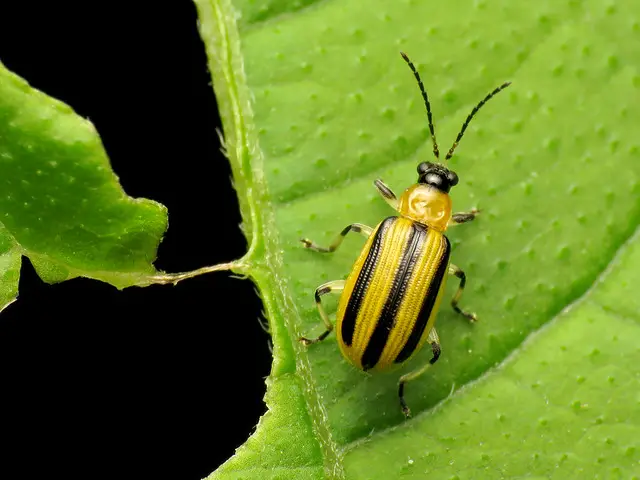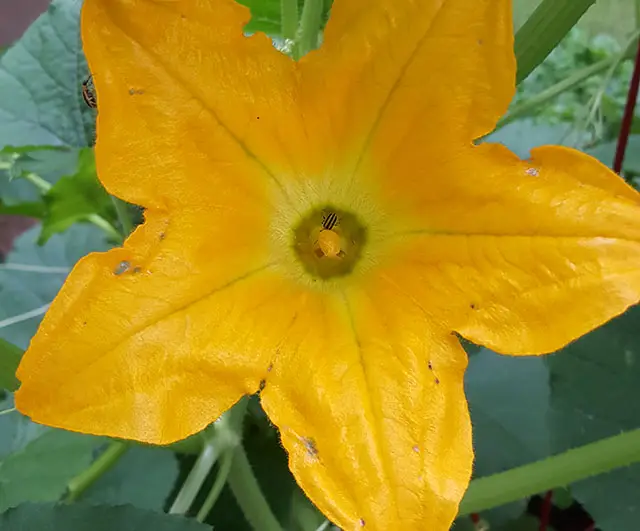Cucumber beetles are one of the most harmful pests for the cucurbits and goud plant family. The stripped, bright colored and rapidly growing pest, has the ability to completely destroy your crops. This might be the last things you want to see in your garden. In this article, we will share the details on the cucumber beetle, their life cycle, plant damage and methods to remove them from your garden.

What are Cucumber beetles?
There are two common varieties of cucumber beetles belong to Chrysomelidae family; the striped cucumber beetle (Acalymma vittatum) and the spotted cucumber beetles (Diabrotica undecimpunctata howardi).
Both have a yellowish-green appearance, one with three strips at back and other with 12 spots. The adults are 1/4 inches long with dark heads, antennae and legs. The larvae are slender (up to 1/3 inch long), white, brown-headed having 3 pair of legs at the thorax.
Life cycle of the Cucumber Beetle
Cucumber beetles often hibernate on plant debris and leaf litter and emerge between mid-April to early June. They feed on seedlings and larvae feed on the root system of host plants. Female larvae lay about 800 orange-yellow eggs in the soil near plant base. The eggs hatch in about 10 days and the larvae pupate after three to more weeks of feeding.

After 10 days the first generation is produced, the complete life cycle of cucumber beetle is 6-9 weeks. They produce more than 4 generations in a single growing season.
Plant Damage from a Cucumber Beetle
Cucumber beetles infest on the leaves, flowers and fruits of vegetables such as cucumber, melon, squash, pumpkin and gourd. The alternative hosts of the pest are potato, beans, cabbage, corn, pea, beet, okra and lettuce. The cucumber beetle larvae affect the plant vigor and severely damage cucumber and melon rind. The adult beetles grow rapidly and feed on foliage, seedlings, pollen and flowers cause crop loss and reduce plant yield. This stunts plant growth, leaves holes in foliage, causes yellowing and wilting of plants, but does not kill them. Feeding on flowers affects fruit yield and feeding on fruits, leaves scars and pocks on them. They are carriers of cucumber mosaic and cucumber bacterial wilt which can be transmitted to other cucumber plants during infestation. Once the plant is infected with these diseases, it can cause complete plant loss.
Prevention and Removal of Cucumber Beetles
If you find yourself with cucumber beetles in your garden, you can apply the following manual methods:
- Handpick them or use a hand-held vacuum cleaner to suck them up.
- Take care of your garden and remove debris, trash and weeds from your garden regularly.
- Plant seedlings in late fall, this will expose cucumber beetles with harsh conditions and reduce their number.
- Transplant your grown vegetables instead of sowing seeds directly.
If the manual methods above dont yield results, you can apply the following tactics:
- Yellow Sticky Traps can be placed in the garden to catch cucumber beetles. Yellow color attracts the pest and they get attached to sticky paper. This way you can easily get rid of them.
- Beneficial Nematodes can also be released in the garden to fight against immature cucumber beetles in the soil.